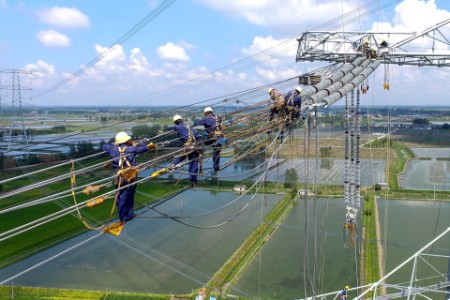
Chapter1
A new perspective on upgrading legacy banking platforms
Banks have tried for years to rebuild systems, but new possibilities are now on the table.
Incumbents are museums of technology
Financial institutions are museums of technology dating back to the 1960s. The complexity makes it impossible to manage risk.
Nearly 50% of banks do not upgrade old IT systems as soon as they should, according to a report by the UK’s Financial Conduct Authority (FCA). And, 43% of US banks still use COBOL, a programming language dating from 1959, a report shows; and extra layers embedded on top of it are causing outages.
Core banking systems often do not run in real time. This is increasingly limiting as customers demand applications and services built around real-time offerings and capabilities.
“There have been some system upgrades in the industry, but no one wants to truly tackle ‘real time’ across a firm’s systems, and that’s a real issue. Most FinTechs have real time built in, and that’s who you’re trying to keep pace with,” one executive said.
What’s more, few people within incumbent banks fully understand the existing core systems, because they have been pieced together over the years by outsourcers. That makes maintenance expensive and dependent on third-party providers.
A sea-change: banks realize they must act
Banks have come to realize that their future commercial viability may depend on their capacity to replace legacy systems.
As one advisor predicted: “In the next five years, the whole consumer finance ecosystem — banking, wealth management, insurance —is going to get fundamentally reframed.”
Another bank executive said: “It seems in the last 12 months there has been a sea-change: making changes to core systems is now a clear and present issue for banks who are trying to figure out a path to address legacy and remain relevant.”
Bankers are accepting the idea that core systems are the heart of their businesses. They need to upgrade, and they want the agility to continuously integrate the latest technologies. They also understand that decisions about the core systems can no longer be relegated to the IT department – and that these should involve management and the board.
Reaching a tipping point
“It’s going to be a matter of fundamental relevance. That’s why legacy transformation is so important in this moment, because there is a context around what is so urgent and why banks need to get it right,” insists one participant.
Why are we at the tipping point?
- Technology costs are coming down making holistic upgrades to core systems or building new banking platforms more attainable.
- Banks want to maximize returns on IT investments, and legacy systems are hindering the move to market with new products and services. While technology investments have allowed them to more effectively leverage their data, automate processes, launch application programming interfaces, and adopt artificial intelligence (AI) and machine-learning applications, banks will need to overhaul their core infrastructure to reap the full rewards.

Chapter2
New possibilities enable banks to develop a roadmap for change
Technology is making it more viable for banks to approach legacy system overhauls.
For bank leaders developing a roadmap for the future, a crucial first step is to determine what capabilities their firms will need to remain competitive and innovative in the coming years. The next step is assessing how upgrading the systems will support those capabilities and what’s the best approach for change.
Participants highlighted two focus areas to position themselves for future success:
- Improving data management – perhaps the single most important driver of systems upgrades.
- Responding to changing customer expectations – reflecting the trends and successes of delivering financial services in new and innovative ways.
Technological advances open the door to opportunities
1. Cloud technology is key to upgrading bank systems
Cloud technology has become central to these transformation efforts. A 2018 study predicted that, by 2021, banks will spend more than US$12b on public cloud infrastructure and data services, up from US$4b in 2017. Cloud technology has the potential to transform an institution’s operational efficiency, because it obviates investment in infrastructure – what’s needed is ready and available in the cloud.
One participant said that the cloud offers a chance to start from scratch: “I see a lot of clients trying to map existing applications onto the cloud; that’s not the best approach. It’s a chance to start fresh with a new data strategy in the cloud and define your data model across the whole bank.”
The next steps could involve moving entire platforms to the cloud, and taking advantage of the speed and computing power of cloud-native software and applications. “The first step is to use the world-scale computing power of a large-scale cloud provider,” a cloud specialist pointed out. Then, AI in the cloud offers new approaches to analysis and how the data is employed, with more automation and new solutions.
The benefit of cloud is the promise of an evergreen system. You no longer need to worry about the platform becoming obsolete.
There are still some unresolved regulatory issues regarding data in the cloud; for example, regulation at the point of storage, concentration risk and, ultimately, systemic risk are areas of concern. But the volume and scale of cloud adoption suggests that these issues are being resolved, according to the International Telecommunications Union.
2. Building new platforms – the “greenfield” approach
For many incumbents, one solution has been to create new, smaller platforms that operate on modern, often cloud-based systems and which are designed to serve a specific strategic need – the so-called “greenfield” approach. Greenfield platforms often operate separately from the larger institution, using their own state-of-the-art IT infrastructure and deploying new technology solutions as needed. This keeps investment under control and quarantines risk to some extent. Several have used new digital platforms to expand into different market segments.
In 2016, Goldman Sachs launched Marcus, a digital-only offering that processes transactions in real time, delivers over the cloud and provides an entry into the consumer-lending market. Other major banks have launched similar digital platforms, including JPMorgan (Finn) and ING (Yolt).
“That’s why greenfield is interesting, because you’re trying new technologies but in a controlled, almost ringfenced way,” comments one executive.
3. Partnering with third-parties
Some firms are partnering with technology firms or challenger FinTechs, to launch these platforms.
Bank of Scotland is working with challenger bank Starling to develop a new mobile-only venture, called Bó, that is expected to house several million accounts at its NatWest division. Lloyd’s Banking Group plans to test a new core system built by Thought Machine, a banking technology provider. It plans to transfer data on 500,000 customers to the new core system and perhaps move across all of its business functions over the next few years.
An incremental strategic roadmap may be the best approach
Many participants suggest that rather than approaching this as a massive one-time investment in transforming systems, banks need to identify a set of objectives and prioritize initial investments. Taking a hybrid approach, one in which a combination of these strategies is implemented to collectively shift the burden from the core system, is recommended by many.
However, equally as important as managing new process implementation, is giving careful attention to decommissioning old systems. Both banks and their third-party platform providers must also be committed to making difficult decisions around what to keep versus decommission.
One director warned that some approaches to updating legacy can leave the lingering problem of old systems that continue to run: “You often get a provider who will say they’ll do everything clean and new, but later on you find out that isn’t the case.”
Another issue banks face in implementing change is that legacy systems exist across diverse geographies, so separate parts of the firm may operate very differently or be subject to divergent regulations and requirements – such as limitations on the ability to move and store data.
One director said, “We have defined what decisions need to be taken together at the global level and those that can be taken at the local level. There’s a lot of balance to figuring out global versus local, and it’s something we still need to work on when it comes to digitalization.”

Chapter3
Hurdles for leadership as they oversee system upgrades
Legacy platform upgrades are a serious strategic challenge requiring board and management oversight.
Investments in system upgrades should be viewed as a serious strategic challenge. As one participant put it, “These issues should be regarded as matters of strategy for management and the board, not just for the Chief Information Officer to deal with.”
Continuously learning about new technologies becomes a critical responsibility for any bank board member today. An executive said, “If I was on a board, my three questions would be: What is the legacy strategy? Where are we going to get the skills to accomplish this? And, are we being ambitious enough? The last one is the most important.”
But, bank leaders still need to balance the near-term cost of major upgrades with the longer-term requirements to remain competitive. These are long-running and expensive initiatives that may take years to pay off and, in the meantime, shareholders may grow restless when facing a lack of immediate bottom-line returns.
Also, regulation and the high level of public scrutiny increases the temptation for institutions to move slowly. That can be a risk as well, as competition increases and customers expect to see change. Banks must find the right pace of change to upgrade core systems.
Conclusion
The question of evaluating return on investment remains. IT investments that enhance customer service and efficiency have been supported by legacy systems that often obstruct banks from achieving true end-to-end digitalization. Now, lower technology costs are empowering them to rethink their approach to overhauling these systems.
This article is based on the Viewpoints (pdf) from the Bank Governance Leadership Network (BGLN) meetings held on 27 February 2019 in London, and on 7 March 2019 in New York, and aims to capture the essence of these discussions and associated research.
You get a report saying your firm has x number of applications, or a particular system was augmented or improved upon, but how do you benchmark your progress versus other firms? How do you know what success looks like?
Summary
IT investments that enhance customer service and efficiency have been supported by legacy systems that often obstruct banks from achieving true end-to-end digitalization. Now, lower technology costs are empowering them to rethink their approach to overhauling these systems.

